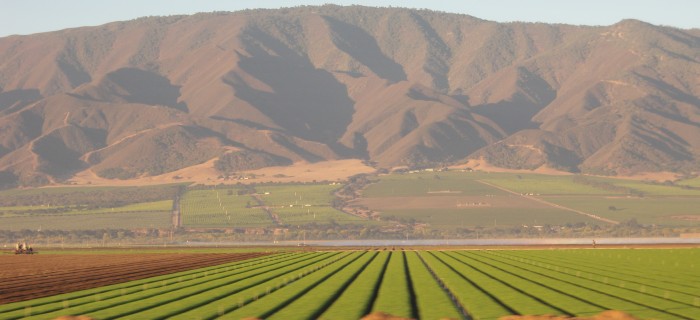Farmland Preservation, Agricultural Easements and Land Access in California
Food Sovereignty: A Critical Dialogue
September 14–15, 2013
Yale University
Abstract
California is a land of contradictions. It is known as the breadbasket of the nation, but farmland is disappearing with alarming speed. Crop and ranch lands are falling out of production at a rate of one square mile every four days between 1984 and 2008. Urbanization and real estate development are a key factor in this conversion process, eating up an average of 38,000 acres a year between 1990 and 2004. However, in the scramble for what crop and ranch land stays in production, large-scale agribusiness is also strong and well established throughout the state’s warm valleys. The result: farmland prices have steadily risen (by 100% between 2002 and 2012 for irrigated land in California) and in many cases surpassed the productive value of the land.
In the nation’s top agricultural producing state where over half of all fruits, nuts and vegetables in the country are produced, farmland is disappearing. Small-scale, new and low-income farmers, especially, are facing serious challenges with regards to accessing land in the face of competition from large-scale agribusiness and real estate development. Under the banner of farmland protection, agricultural easements have become one of the most common tools for combatting this loss of farmland. According to the American Farmland Trust’s 2012 national survey, agricultural easements managed by state and local governments as well as private land trusts, have facilitated the protection of 5 million acres of land. A number of studies explore how these deals are made possible through donations, consumer funded purchases and leveraging public and private funds, but what is less clear is: who is benefitting from these easement schemes? And why?
This paper begins by situating agricultural easements within the farmland preservation movement and explores the three main ideological undercurrents that fuel this effort: economic utilitarianism, progressive agrarianism, and resource conservationism. The key actors driving the use of conservation easements to protect farmland are local land trusts, therefore multiple motivations for farmland preservation co-exist within the movement, depending on the different character of each trust. Then I take up the question of what type of farmer this easement strategy benefits in hopes of shedding some light on the future generation of farmers this farmland preservation model protects. One of the main conclusions of this research is that agricultural conservation easements benefit a limited sector of farmers, predominantly those who already have family land wealth and farm near an affluent land trust donor base. And few land trusts address the serious vulnerability of small farmers (even those with land) and farmworkers in the context of California’s highly industrialized agriculture system.


 Help Food First to continue growing an informed, transformative, and flourishing food movement.
Help Food First to continue growing an informed, transformative, and flourishing food movement.




